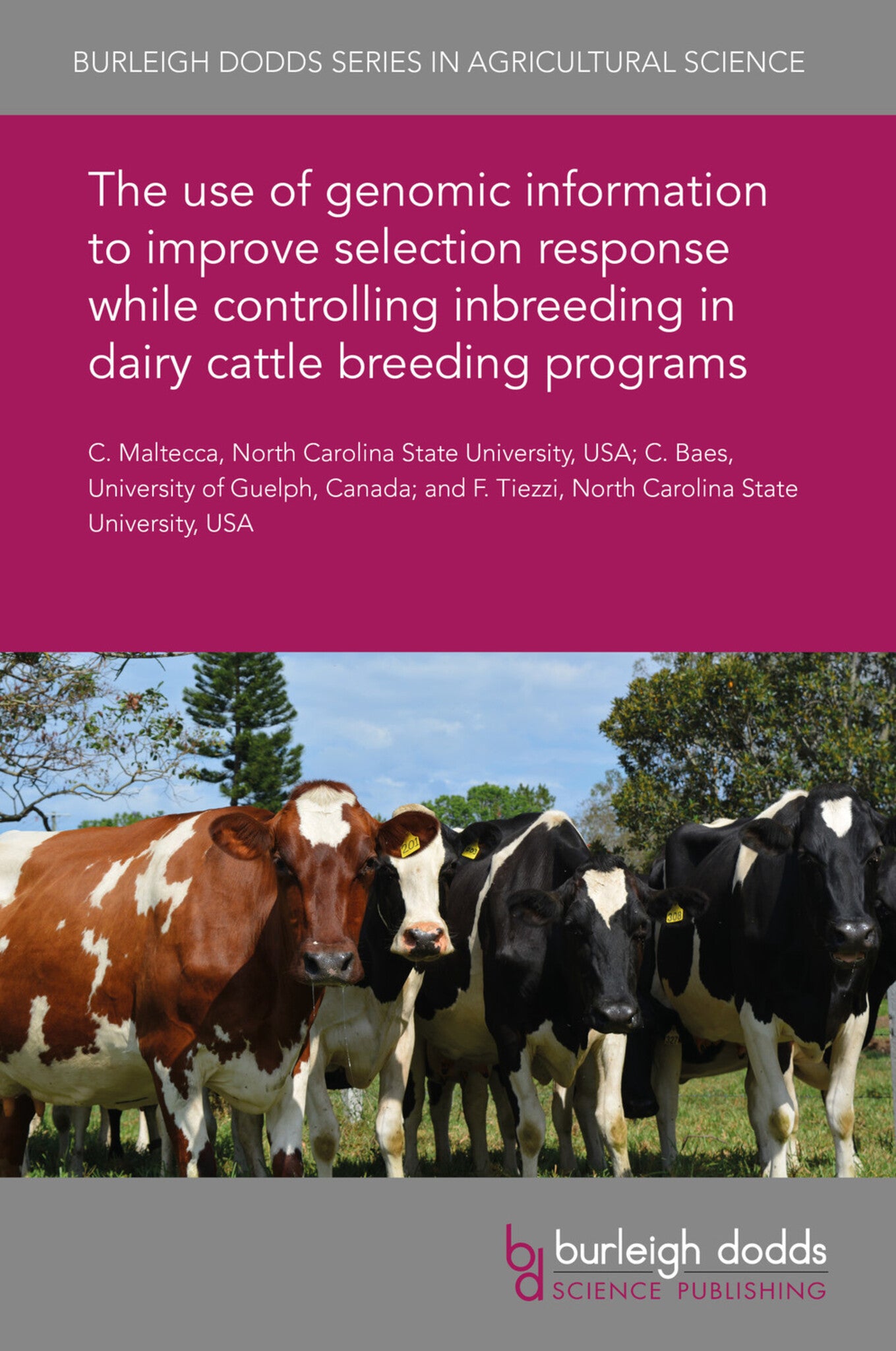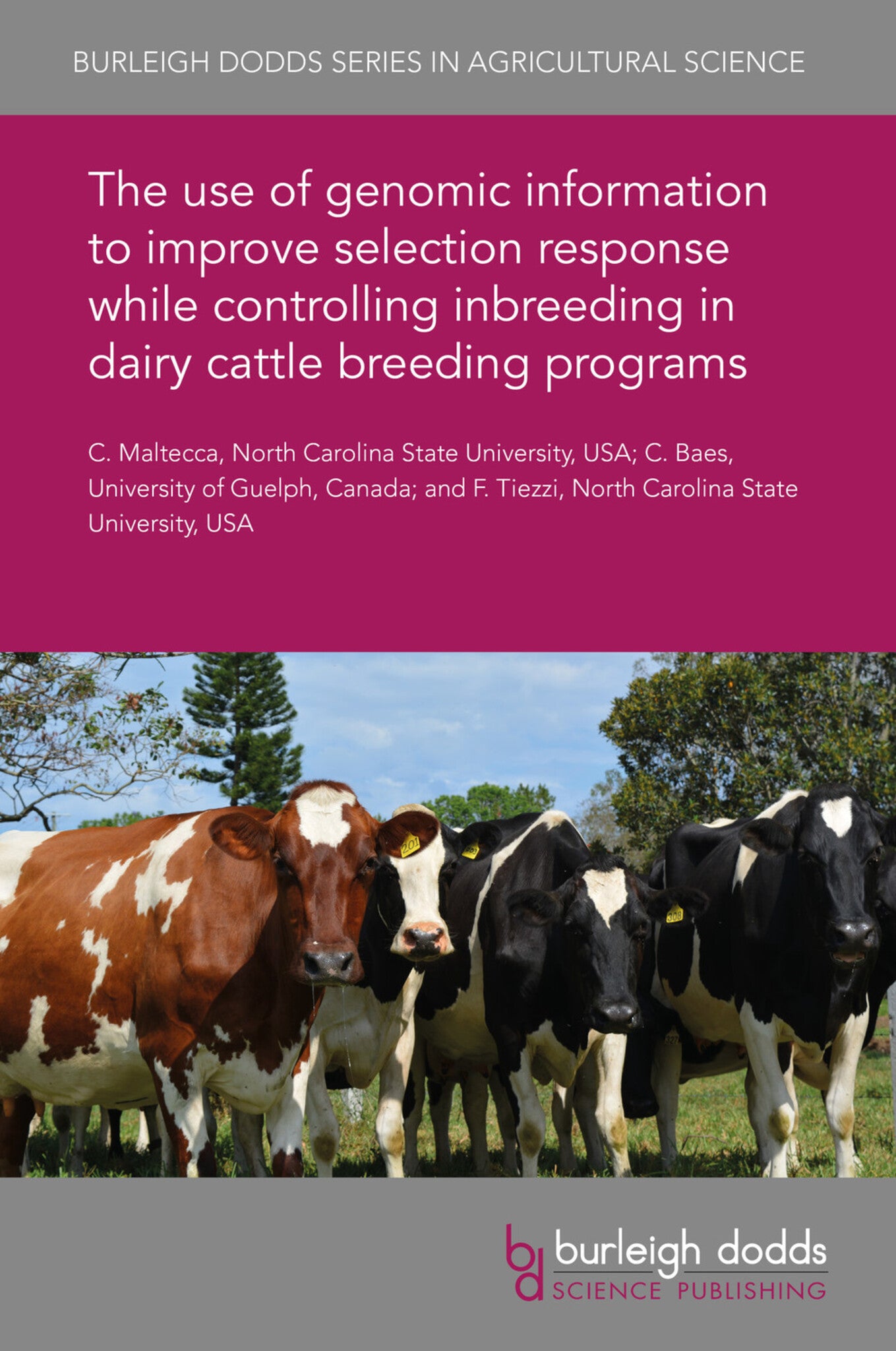We're sorry. An error has occurred
Please cancel or retry.
The use of genomic information to improve selection response while controlling inbreeding in dairy cattle breeding programs

Some error occured while loading the Quick View. Please close the Quick View and try reloading the page.
Couldn't load pickup availability
- Format:
-
23 December 2019


TECHNOLOGY & ENGINEERING / Agriculture / Sustainable Agriculture, Dairy farming, TECHNOLOGY & ENGINEERING / Agriculture / Animal Husbandry, Sustainable agriculture, Animal husbandry, Animal breeding

1 Introduction 2 Assessing population size and inbreeding 3 Using genetic information to reduce inbreeding 4 Understanding the genetics of inbreeding 5 Construction of mating designs to limit inbreeding 6 Maintaining the diversity of alleles 7 Optimum contribution selection (OCS) to maximize selection response while controlling inbreeding 8 Case study: using optimum contribution selection (OCS) 9 Conclusion 10 References



